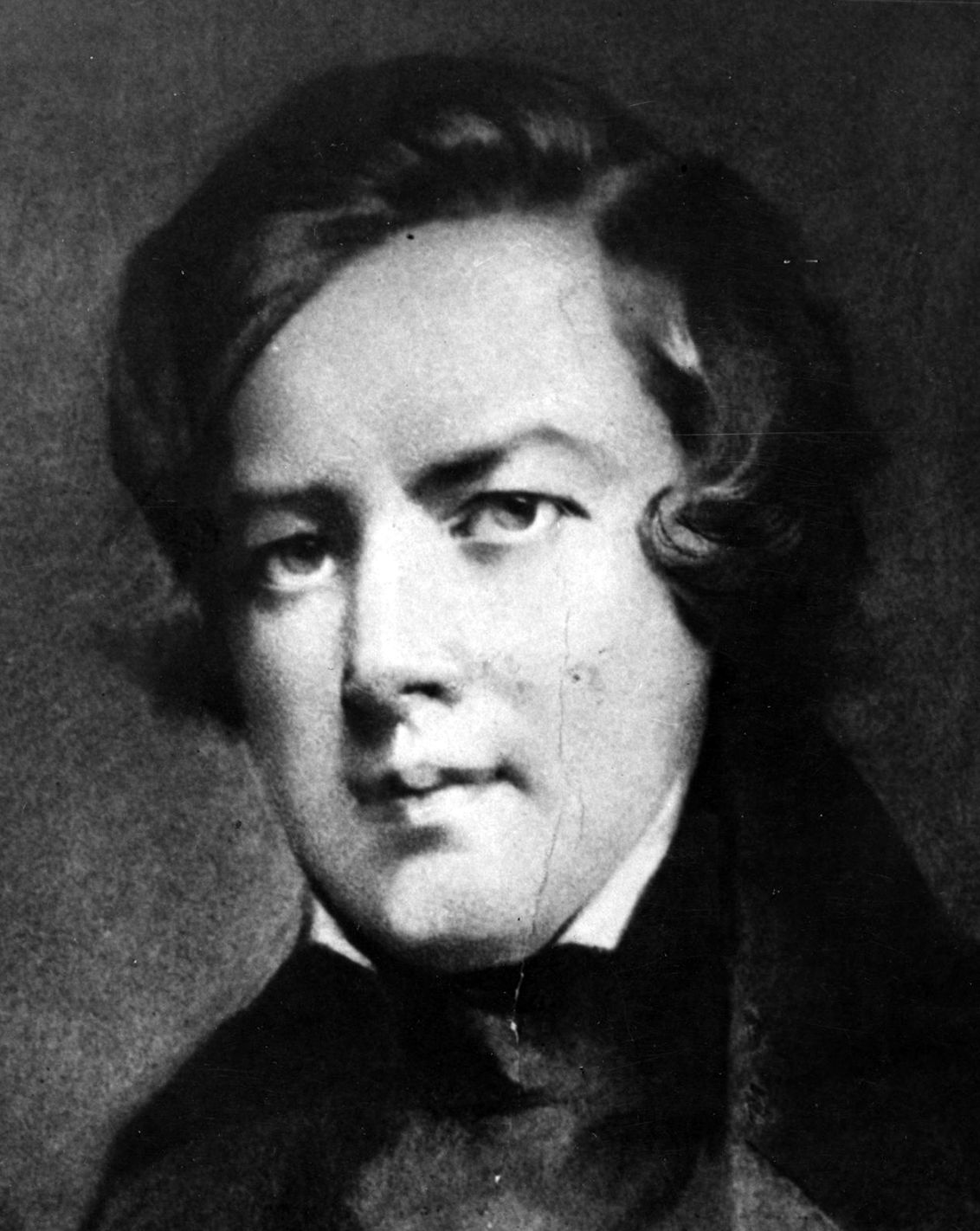|
||
|
Schumann's piano concerto was written in two parts separated by a four year gap. In 1841 he compsed a Fansasy for piano and orchestra dedicated to wife Clara. This was to become the first movement of the concerto. He completed the second and third movements in 1845, and the first performance was given at a Gewandhaus concert in Leipzig, on New Year's Day, 1846 with Clara as soloist. Schumann's concerto, though outwardly resembling the earlier models of Mozart and Beethoven breaks new ground in several respects. Most strikingly it moves away from the contemporary use of the concerto as a showcase for the virtuoso pianist - so much so that Franz Lizst called it a "concerto without piano". There are of course highly demanding passages for the soloist. The finale in particular makes virtuosic demands, but it is not a showpiece. Overall the piano and orchestra form an integrated whole weaving subtle textures together with delightful lyricism. It is also very free in its use of form. The first and third movements follow classical outlines but with considerable spontainaity. The slow movement is unusually short and has a childlike innocence that characterises much of Schumann's piano writing. The first movement opens with a dramatic outburst from the soloist, slightly reminesscent of the cadenza with which Beethoven opens the Emperor concerto, though much shorter. This is followed by a simple expressive melody, played by the woodwinds, from which much of the material of the first and last movements is derived. The piano and orchestra transform this melody into musical passages that are sometimes expansive, sometimes rhapsodic and sometimes dramatic and always have striking originality. The second movement is called an Intermezzo. It is based on a gentle beautiful melody with a slightly uncertain halting character. It is joined directly to the finale by the generative theme of the first movement. The finale is full of drive and energy, swept along by a dancing triple rhythm, with the same ingenious musical development found in the first movement. Long before composing the concerto Schumann wrote a critical article on the contemporary concerto in which he said: "And so we must await the genius who will show us in a newer and more brilliant way, how orchestra and piano may be combined, and how the soloist, dominant at the keyboard, may unfold the wealth of his instrument and his art, while the orchestra, no longer a mere spectator, may interweave its manifold facets into the scene." History has shown that he was that genius. The work was to become a model for later composers such as Brahms and Grieg. Schumann's piano concerto was performed by the Portobello orchestra on the 8th December 2012. Ths pianist was Christine Zhou and the conductor was David Ward. back |

